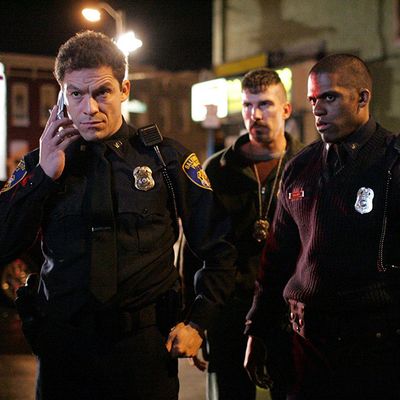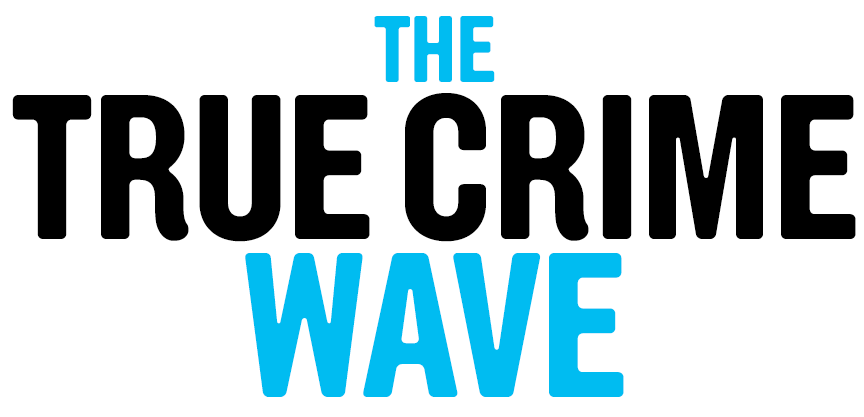
All week long, Vulture is exploring the many ways true crime has become one of the most dominant genres in popular culture.
Since 2015, a year bookended by the debuts of two widely watched and discussed true crime series, The Jinx and Making a Murderer, the true-crime genre has been booming.
Netflix continues to serve up buzzy entries in this category, including The Keepers, Wild Wild Country, Evil Genius, and an expanded version of The Staircase. Oxygen is starting to take up more, um, oxygen in this arena as well by launching an array of series that fall under the same sort of investigative umbrella. Scripted true crime — dramas based on real cases, but brought to life using actors and fiction-meets-nonfiction storytelling — has exploded. There’s more to come, in the form of HBO’s The Case Against Adnan Syed, based on the same case that inspired Serial; an adaptation of Michelle McNamara’s I’ll Be Gone in the Dark, also from HBO; Amazon’s Jordan Peele–produced docuseries about Lorena Bobbit; Bravo’s Dirty John, based on the podcast of the same name; a Sundance Channel docuseries about Jim Jones called Jonestown: Terror in the Jungle; and undoubtedly others that have yet to be announced. (I’m leaving podcasts out of this, otherwise this list would be far longer.)
What is it about true crime that keeps us coming back for more blow-poke theories and rehashed courtroom trials?
A frequently cited psychological explanation, offered by criminology professor Scott Bonn in a 2016 article for Time, is that we derive twisted pleasure from watching stories about murder or other heinous acts. “The public is drawn to true crime because it triggers the most basic and powerful emotion in all of us — fear,” he wrote. “As a source of popular-culture entertainment, it allows us to experience fear and horror in a controlled environment where the threat is exciting but not real.” This may be true, but it also explains just as well our interest in horror movies and thrillers, which are different beasts than a true-crime docuseries.
A recent HuffPost article quoted a psychology professor, Amanda Vicary, who says true-crime stories may trigger our survival instincts. “By learning about murders — who is more likely to be a murderer, how do these crimes happen, who are the victims, etc. — people are also learning about ways to prevent becoming a victim themselves.”
Maybe so. Personally, I think the addiction to these shows continues to grow because they tap into some key aspects of the way we watch television in the 21st century. True-crime series combine elements of one of TV’s most resilient genres — the procedural — with key aspects of the kinds of shows been emblematic of the new golden age of television, or Peak TV, or whatever the hell we’re calling the current era of broadcast and streaming content: specifically, the mystery box show and the prestige drama. TV has basically trained us for this true-crime moment.
Like classic cop or courtroom procedurals and detective shows, true crime explores the nitty-gritty process of investigating serious violations of the law: identifying suspects, interviewing witnesses, uncovering and examining evidence, dissecting the arguments presented by the prosecution vs. the defense, and on and on. All the pleasure centers that are hit by the sound of that Law & Order “dun, dun” — which serves as an audio harbinger of the criminal-justice dissection that’s about to unfold — are struck by true-crime shows. As true-crime parodies have ably demonstrated, there are also tropes of that genre that rear their heads as reliably as the tropes of a typical police procedural. See: talking-head interviews in dimly lit kitchens, reveals that suddenly change our whole understanding of the case, and an overall tone of almost comical self-seriousness. We’ve seen enough true crime at this point that we can anticipate the kind of beats that such a series might hit, even if we don’t know exactly what’s going to happen next. That’s weirdly comforting, the same way that zoning out in front of an episode of NCIS can be a bizarrely calming way to unwind.
But true crime ultimately differs from traditional fictional crime shows, not only because such series are more explicitly based on actual stories, but because they dive far more deeply and extensively into detail. In Law & Order and pretty much every CBS series made in a similar vein, cases are open and shut before each episode ends. Shows like The Staircase or Making a Murderer don’t work that way. They demand that we dedicate multiple hours to watching a single perpetrator wind his way through the judicial system. They require attention and commitment, and tend to encourage viewers to analyze evidence on their own or online. Which is not so different from the way mystery box shows like Lost, Heroes, Westworld or The Leftovers operate. They introduce us to worlds that look simultaneously familiar and slightly askew, and give us drips and drops of information about what’s happening and what’s motivating the characters. They raise questions that then lead to other questions. Basically, they’re the kinds of shows engineered to provide fodder for Reddit threads.
True-crime shows do that, too, by similarly turning the viewer into a puzzle-solver. They also foster the same relationship between series and audience as mystery-box shows do, by encouraging conversations, in person or on social media, in which everyone watching can share their thoughts about “what’s really going happening.” Fans love theories, and true-crime shows are teed up perfectly to stoke the desire to develop them.
Back in 2011, Heather Havrilesky wrote a piece for the New York Times bemoaning the influence of mystery box–style shows. Well, one in particular: Lost, which she said had left a “toxic stain” on current TV hits and “threatens, even in death, to kill the current golden age of television.” (For the record, it didn’t.) Her concern was that Lost and other shows like it were so driven by the dropping of clues that other shows felt a compulsion to mimic the approach, to their own detriment. One example she pointed to: the highly controversial first season of The Killing, whose promotional tagline was “Who killed Rosie Larsen?” and famously ended, after dangling various red herrings, without clarifying who, in fact, killed Rosie Larsen.
Which is exactly what many true-crime series do. They trot out the facts of a case, steer our opinions in one direction, then redirect them, and, ultimately, at least usually, never confirm what actually happened or who is definitively guilty. Make no mistake: most of these shows have a clear point of view. Making a Murderer leads us to believe that Steven Avery is not guilty of killing photographer Teresa Halbach. The Staircase argues pretty strenuously that Michael Peterson is not responsible for his wife’s death. It’s hard to watch The Jinx and think, you know, that Robert Durst: he seems pretty innocent. But in all of these examples, the truth of the matter is we don’t know for sure what these men did or didn’t do, even after investing eight or 13 or more hours in trying to find out. Part of what makes traditional procedurals such trusty companions is that you know the cop or the lawyer will eventually solve the crime and get some measure of justice. In real life, there is no such reassurance and often there is no closure. Which is something that we’ve come to accept from our storytelling after years of watching mystery-box shows as well as “golden age” sophisticated TV dramas.
Many of the most celebrated dramas of the past 20 years or so have also famously focused on anti-heroes, many of whom were involved in criminal enterprises. Watching these shows made it possible for us to identify, at least a little, with a Mafia man like Tony on The Sopranos, or a drug-dealing mom like Nancy on Weeds, or a meth maker like Walt on Breaking Bad, or even a serial killer like Dexter Morgan of Showtime’s Dexter. In a way, those shows served as gateways to our embrace of true crime, which also features plenty of anti-heroes: people who may have done something awful or simply are not likable, but are nevertheless intriguing. Ma Anand Sheela, essentially the heavy of the Rajneesh movement depicted in Wild Wild Country, is easily one of the most fascinating characters on TV this year. My immediate response to her while watching that series was: Wow, someone should create a scripted series based entirely on her. She stood out as someone admirable, scary, and reprehensible in equal measure, a bundle of human contradictions. In other words, exactly the kind of figure who could be the focus of her own anti-heroic drama.
I’m not saying that the public would reject true crime if it hadn’t been for The Sopranos or Breaking Bad. But I do think that an appreciation for complicated and ethically challenged protagonists makes it much easier to embrace docuseries in which it’s crucial to keep an open mind about a man or woman who seems a little slippery.
A lot of true-crime series don’t lay blame directly on a villain. Most also make a point of revealing the flaws in the judicial system that are often as responsible, if not more responsible, for preventing the right thing from being done. Making a Murderer, The Staircase, Evil Genius, The People v. O.J., Unsolved: All of these shine a light on the obstacles that victims and the accused face because of bugs in the legal machinery as well as broader cracks in our cultural foundation, such as racial or gender bias. Some scripted, fictional works do the same thing, like The Night Of, Sharp Objects, and the beloved top-tier drama that may be singularly responsible for completely changing our perceptions and expectations of what a show about crime is supposed to be: The Wire.
Our collective obsession with true crime is certainly also guided by something innate about the genre itself. At the end of any scripted crime show — a regular drama, a procedural, or a mystery-box show — you can shake your head at what you just saw and say, “Wow, I can’t believe all that just happened.” At the end of a true-crime series, you shake your head and say, “I can’t believe all that just happened.” Then you realize … it all really, actually, did. Even the most outstanding shows in most other genres can’t have that effect.



